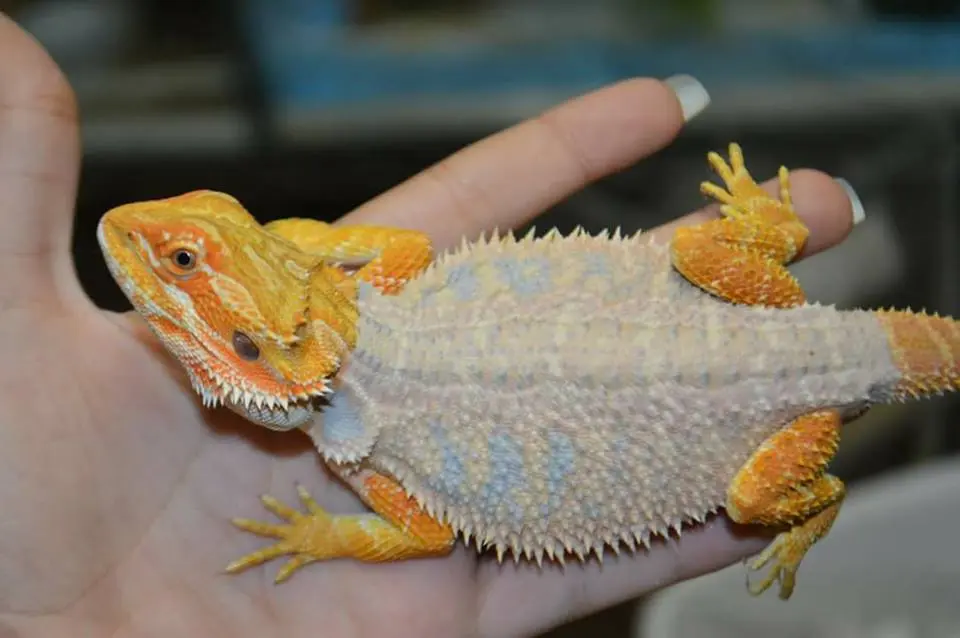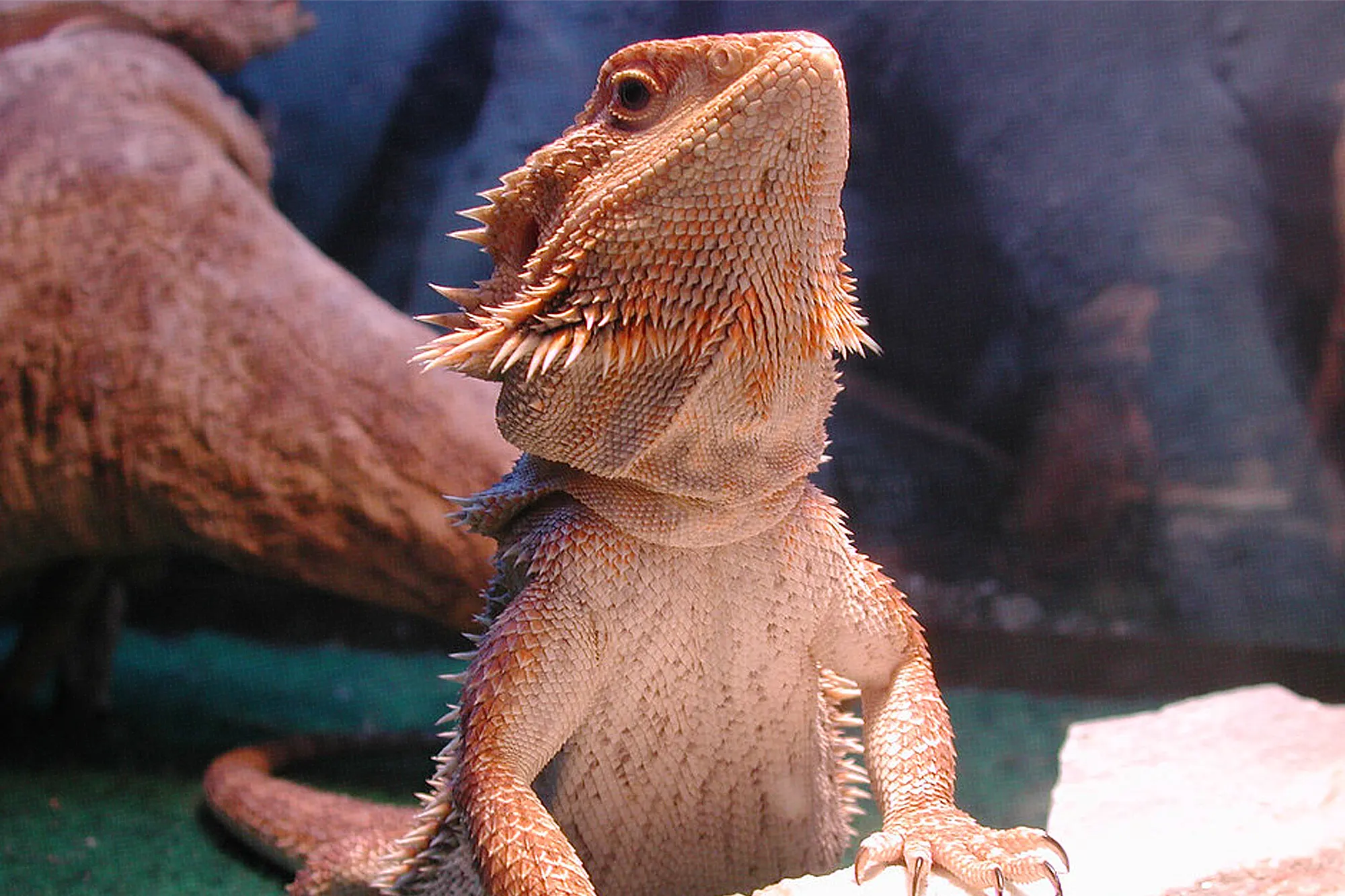Shedding in bearded dragons is a natural part of their growth process, but it can cause some concern for new owners. But don’t worry, it’s not the end of the world when your pet bearded dragon begins to shed its skin. Quite the contrary, it is a completely normal, healthy process. They’re not falling apart, they’re just changing wardrobes. Here’s all you need to know!
So, what’s shedding all about?

- A natural process: First things first, shedding in bearded dragons is like puberty for humans. It happens because they grow, and their old skin just can’t keep up with the pace. Just like how us humans grow out of our old clothes.
- Frequency: Younger bearded dragons shed more often than adults because, like your ever-hungry teenage son, they’re still growing fast. Adult dragons shed usually once or twice a year.
- Whole or in patches?: Though some reptiles shed their skin in one full piece (looking at you, snakes!), beardies prefer to keep things interesting by shedding in patches.
Signs Your Bearded Dragon is About to Shed

Here are some sure-fire signs your baby dragon is about to shed it’s old skin:
1. Change in Color
Bearded dragons will undergo a noticeable change in color before shedding. Their typical vibrant colors might appear dull or greyish. The shift in color signals the loosening of the outer layer of skin, preparing for shedding.
2. Behavioral Changes
During the pre-shed phase, bearded dragons may exhibit changes in behavior:
- Increased restlessness: Your bearded dragon might seem agitated or restless. They might frequently move or scrape against enclosure accessories to accelerate the shedding process.
- Reduced appetite: Bearded dragons preparing to shed may eat less than usual. This reduction could be due to the discomfort or stress related to shedding.
- Less activity: Some bearded dragons might become less active and sleep more during their pre-shed period.
3. Eye Bulging
An unusual but standard pre-shed behavior in bearded dragons is eye bulging. By widening their eyes, bearded dragons help to loosen the skin around the eye area, simplifying the shedding process. Though alarming to witness, this is pretty normal behavior.
4. Skin Texture Changes
As the new layer of skin grows underneath, the old layer begins to lift. This lifting creates the appearance of rough or uneven skin texture. The old skin will seem somewhat wrinkly or baggy.
5. Shedding in Patches
Unlike snakes that shed their skin all at once, bearded dragons often shed in patches. So, if you witness shedding beginning in some areas such as the head or the tail, you can expect the rest of the body to follow suit within a few days.
6. Cloudy or Milky Eyes
The eye area can give vital clues about impending shedding. A bearded dragon might display cloudy or milky eyes, caused by fluid accumulating between the old and new skin layers to ease shedding.
How to Assist Your Bearded Dragon During Shedding

Shedding is a natural and necessary process for bearded dragons, allowing them to grow and maintain healthy skin. Here are the different ways you can assist your bearded dragon during the shedding process:
1. Providing Appropriate Baths
Proper hydration helps to loosen the old skin, facilitating a smoother shedding process:
- Regular Bathing: Bathe your bearded dragon in lukewarm water every 2-3 days during the shedding period. It ensures sufficient hydration and aids in loosening the old skin.
- Proper Bath Level: The water level should not exceed your dragon’s shoulders to ensure safe bathing.
- Gentle Scrubbing: Lightly brush the dragon’s skin with a soft toothbrush to help loosen skin patches, but do not force the skin off.
2. Maintaining Optimum Habitat Humidity
The moisture level within the bearded dragon’s enclosure plays a role in the shedding process:
- Increase Humidity: A slight increase in humidity can ease shedding. However, humidity should not exceed 35%, as excessive moisture can cause respiratory issues.
- Misting: Spraying or misting your bearded dragon lightly with warm water can help maintain skin hydration.
- Substrate: Consider moisture-retaining substrates, like coconut fiber, that can help maintain a more beneficial humidity level during shedding.
3. Appropriate Diet and Supplementation
Ensuring that your bearded dragon is consuming nutritious food during shedding can promote healthier new skin growth:
- Suitable Diet: Maintain a balanced diet of vegetables, fruits, and insects. Remember to dust the insects with calcium and multivitamin supplements.
- Hydrating foods: Provide foods with high moisture content like cucumbers or watermelon to supplement hydration.
- Vitamin A Supplements: Vitamin A contributes to healthy skin. Discuss with your vet about including a Vitamin A supplement during shedding.
4. Provide Shedding Aids
Assist your bearded dragon physically by adding shedding aids to their enclosure:
- Rocks or Branches: Including safe climbing materials such as branches or rocks can provide a surface for your bearded dragon to rub against, promoting shed.
- Hiding Places: Provide comfortable hiding spots within the enclosure. They are used by bearded dragons seeking alone time or relief from light during shedding.
5. Observing and Monitoring
Keeping a close eye on your bearded dragon during shedding is crucial:
- Avoid Peeling Skin: As tempting as it might be to help by peeling off the flaky skin, refrain from doing so. It can cause irritation or damage the new skin beneath.
- Shedding Schedule: Understanding your bearded dragon’s shedding schedule will prepare you and help you detect any potential issues.
- Veterinary Care: Keep a lookout for any signs of incomplete shed, such as retained skin on the toes or tail. If these areas do not shed entirely, it could result in circulation issues, requiring veterinary attention.
Remember, shedding is a natural process indicating healthy growth in your bearded dragon. Observing these signs and providing the necessary care during this period will ensure their comfort and well-being.
When to Worry
Usually, shedding is a straightforward process, but if you notice the following signs, then a visit to the vet may be in order:
- Incomplete Shedding: If your bearded dragon’s shedding process doesn’t come to an end or there are patches of skin that refuse to shed, this may cause health problems in the future.
- Irregular Shed Patterns: An irregular or uneven shed can indicate an issue that should be addressed. This may include unusual shedding frequencies or shedding only in specific areas.
- Complications from Retained Shed: If shed skin remains attached, it can lead to further complications such as bacterial or fungal infections, toe or tail loss, and general discomfort.
Final Thoughts
To conclude, do not fret when your beardie starts to shed It’s a perfectly normal part of their life. Think back to that time when your favorite pair of jeans just couldn’t keep up with your growing body, no matter how much you loved them. That’s exactly what’s happening when your beardie starts shedding its skin—it’s just outgrowing its outfit.
